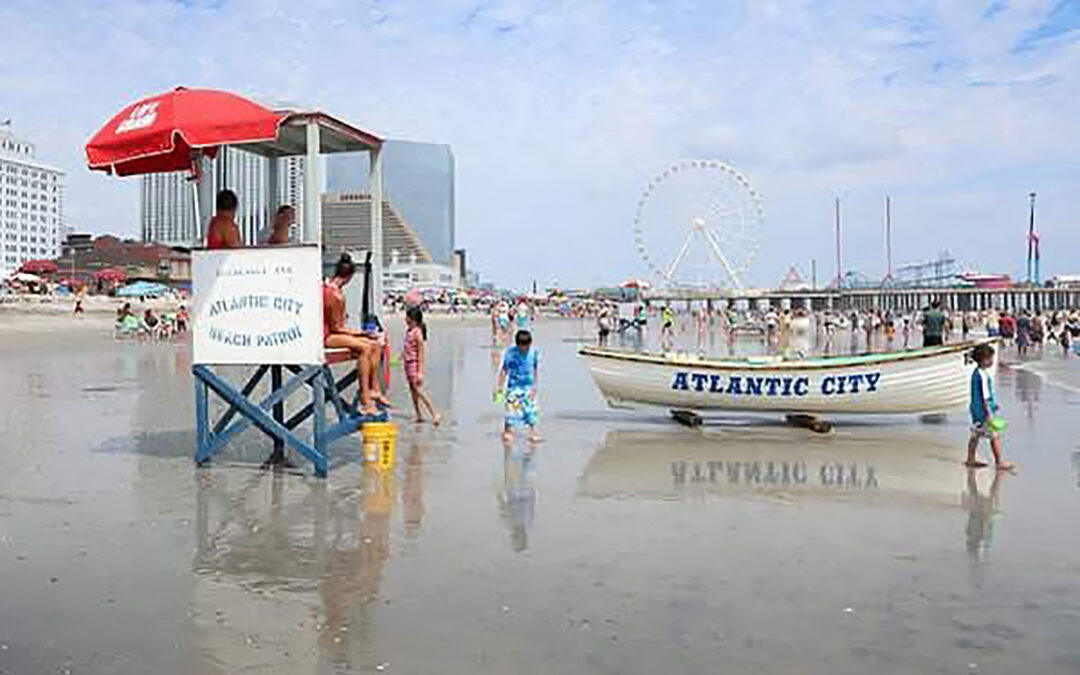Now in his 11th year as chief of the Atlantic City Beach Patrol, Steve Downey leads a team of lifeguards tasked with protecting one of the busiest and most challenging stretches of coastline on the Jersey Shore.
The city attracts a diverse mix of visitors, many of whom have limited experience with ocean swimming. This creates unique hazards for beachgoers and challenges for lifeguards, particularly in a city lined with jetties, groins and other submerged structures that affect tides and currents.
“A lot of our visitors are from urban areas or are international tourists,” Downey said. “They’re used to swimming in pools or lakes, not the ocean. That unfamiliarity adds risk.”
Among the most dangerous areas are those near the jetties, where the ocean floor can drop suddenly — from knee-deep to neck-deep in a single step — increasing the likelihood of drowning. The patrol regularly sees high rescue numbers, often conducting dozens of saves in a single day.
In fact, Atlantic City lifeguards typically make more than 1,000 rescues each summer. The only exception in recent years was in 2024, when colder-than-usual ocean temperatures led to fewer swimmers — and fewer incidents.
Over the 2025 Independence Day weekend alone — from Thursday, July 3, to Sunday, July 6 — lifeguards performed 135 rescues, Downey said.
Rip currents and changing ocean floors
Rip currents remain the leading cause of rescues. These fast-moving currents typically form near structures like piers and rocks, but recent beach replenishment projects have shifted the underwater terrain, making rip currents less predictable and harder to monitor.
“The sand is always moving,” Downey said. “We have to constantly reassess risk zones throughout the day.”
To keep pace with changing conditions, the patrol began using drone surveillance in 2024. Still in the early stages of deployment, the drones help monitor hard-to-reach areas and assist during times of limited staffing.
Downey said he hopes to expand the drones’ role during shoulder seasons, such as September, when beach attendance remains high but lifeguard staffing is reduced.
Staffing and safety awareness
The patrol currently employs about 155 lifeguards – below the state allocation of 165 and well under its historical peak of 185. Still, Downey said this is one of the best-staffed seasons in the past decade.
In addition to staffing the beaches, the patrol continues to promote swimmer safety, especially the importance of remaining within designated guarded areas.
“If you can’t see a lifeguard, then the lifeguard can’t see you,” Downey said.
Heat brings additional risks
The recent heat wave has also brought new concerns. In the past week alone, the patrol responded to about 25 heat-related medical incidents, including several cases of heatstroke and foot burns from scorching sand.
In one case, someone’s feet were badly burned just from walking barefoot on the sand, Downey said.

With beach crowds now rivaling the city’s air show days — estimated between 300,000 to 400,000 people — Downey urged the public to follow four simple safety tips:
- Swim only when lifeguards are on duty
- Stay hydrated
- Wear appropriate footwear
- Know how to escape a rip current (swim parallel to the shore)
“These basics can save lives,” Downey said.
Julia is a recent Rider University graduate, where she studied multiplatform journalism and social media strategies. In her spare time, she enjoys reading, trying new coffee shops, photography and the beach. She can be reached at juliatrainmedia@gmail.com or connect with her on Instagram @juliatrain

















